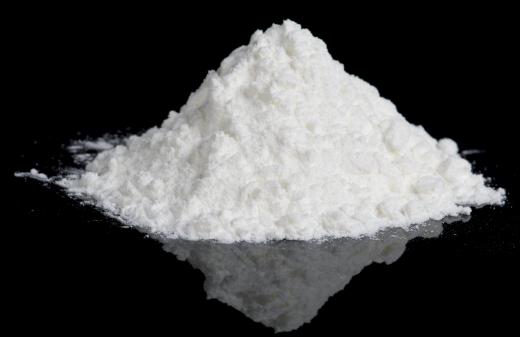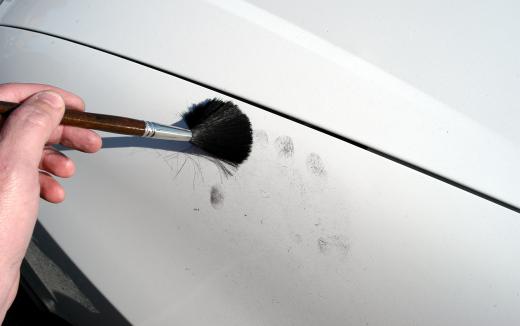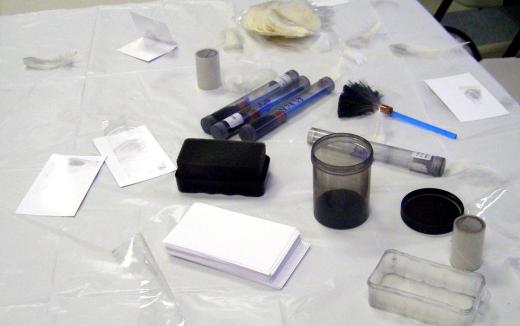What is Fingerprint Dusting?
Fingerprint dusting is a procedure used by police officers at crime scenes in an attempt to identify suspects. Dusting powder over commonly touched surfaces, or surfaces that are particularly relevant to the crime, in order to find fingerprints might help officers figure out who is responsible for a crime. The powder is necessary to see fingerprints, which are usually not visible to the naked eye.
The process of dusting for fingerprints is pretty well captured by the name. Police brush different powders on surfaces where they are likely to find fingerprints. For example, if officers are investigating a home break-in, they might use fingerprint dusting around the door or window where they suspect the intruder entered. Fingerprints are most easily detected on smooth surfaces, because texture is likely to interfere with the pattern and not result in a clean print.

Powders used in fingerprint dusting can vary but are generally mineral-based with a low reactivity. On dark surfaces, a white powder, perhaps made of talc or other chalky materials, is used. Lighter surfaces require a darker powder to make the fingerprints visible, so it could be made from graphite or charcoal. Using powder that contrasts with the color of the surface is important because it ensures that officers will be able to easily detect any prints.

Ridges in human skin are responsible for the existence of fingerprints. The patterns formed by these ridges are unique to each individual, which allows police to identify suspects after fingerprint dusting. Natural oils in the skin make the finger pads act somewhat like a stamp when they touch a surface. These oils create an outline of the unique ridges on whatever surface a person touches, resulting in a fingerprint. Fingerprint dusting powder sticks to the oils, highlighting the pattern of the ridges and revealing the fingerprint.

After dusting reveals the prints, police can potentially use them to identify suspects in a crime. Clear tape is gently placed over the dust outlines of the fingerprints and then pulled up, transferring the powder outline from whatever surface it was on to the tape. Officers can then process the prints and try to use them to figure out who committed a crime. The key for them is to figure out which prints belong at the crime scene and which ones do not. Returning to the home break-in example, if the police know what the fingerprints look like for everyone who had permission to be in the house, they can use the process of elimination to decide which fingerprints belong to the intruder.
AS FEATURED ON:
AS FEATURED ON:














Discuss this Article
Post your comments